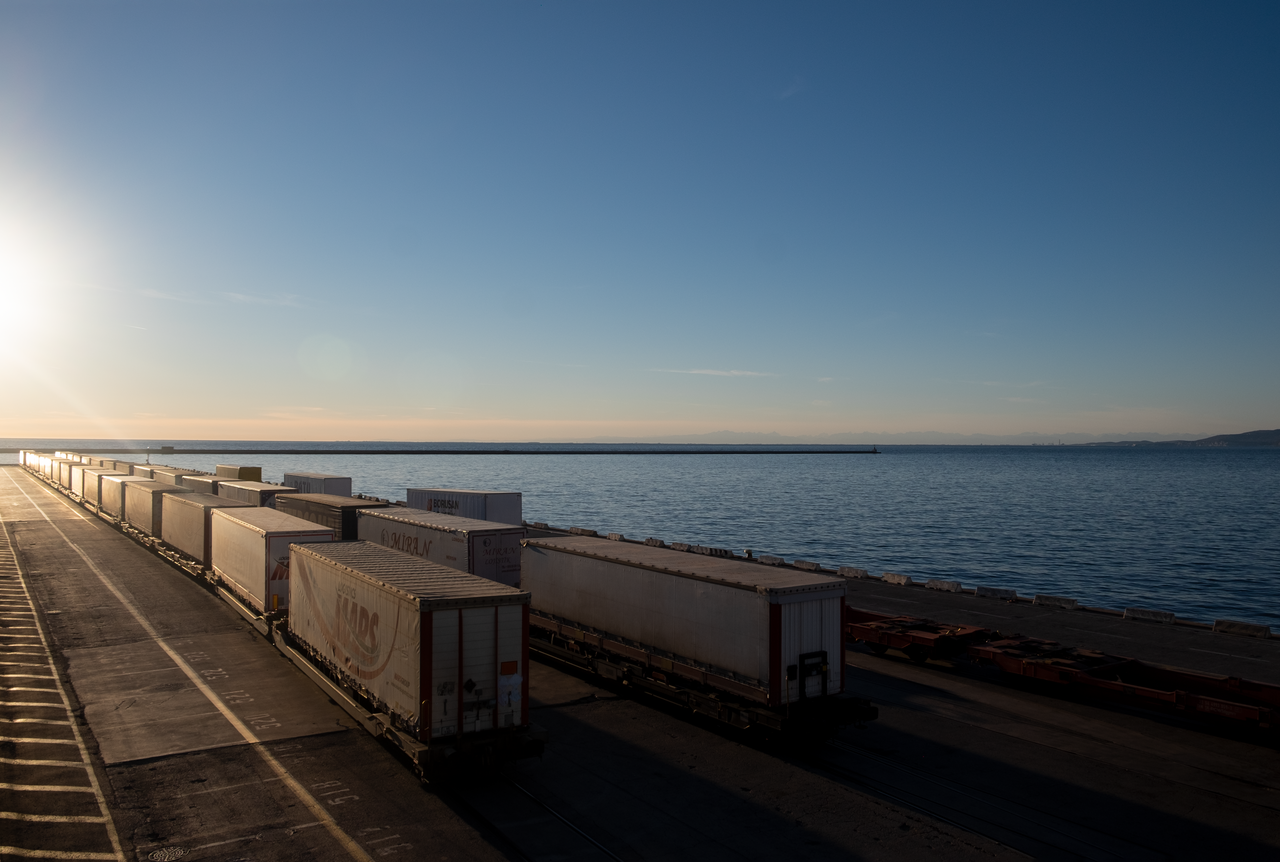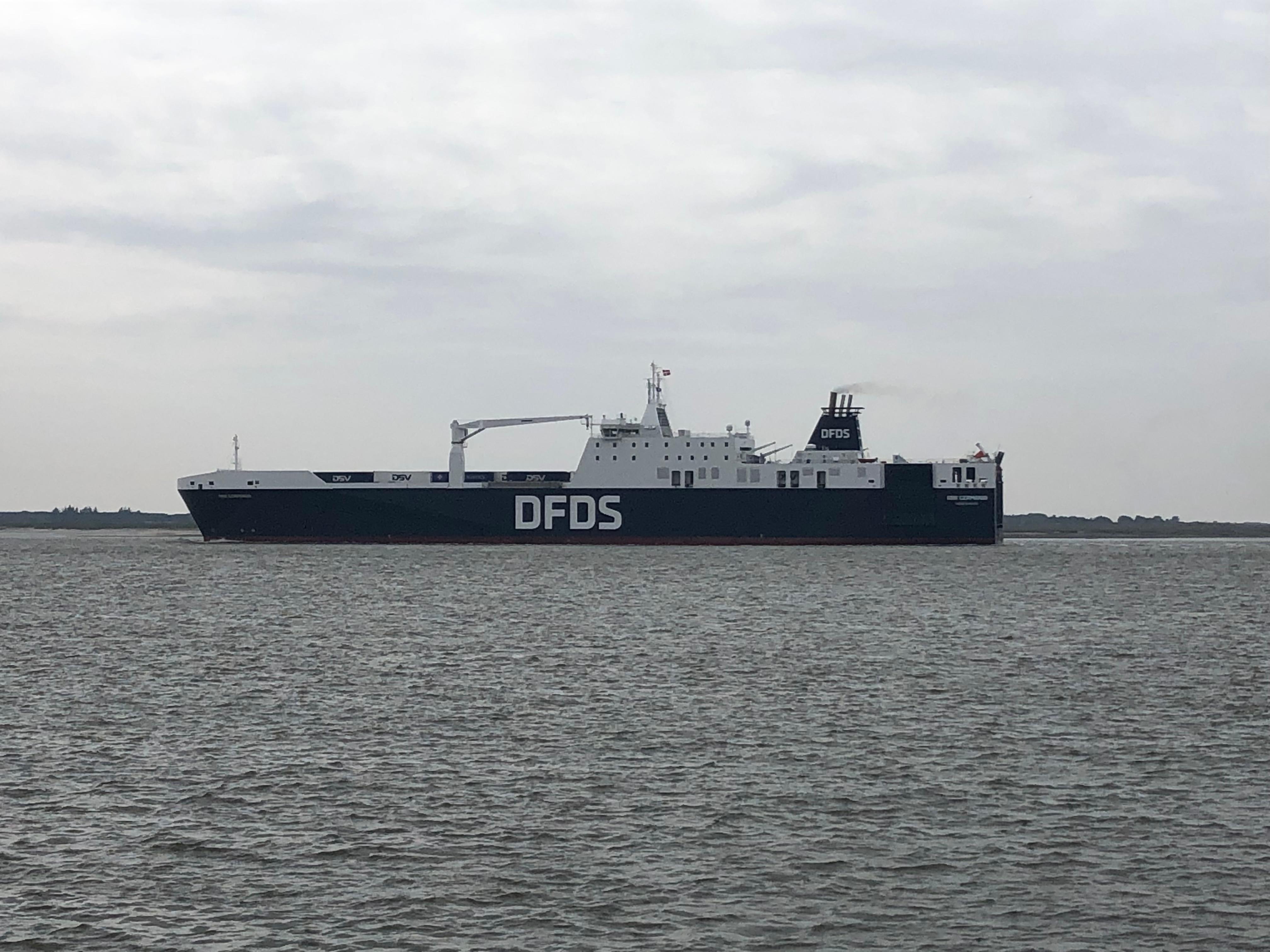
Green hydrogen
Hydrogen is one potential fuel type we are investigating. It contains no carbon, can be produced using only renewable energy and water and does not pollute. Hydrogen has the potential to become a significant fuel source for ships and society in general.
Large-scale hydrogen production plants are underway, and this will bring the currently very high cost of hydrogen down. Using hydrogen as fuel will make ships a lot simpler. Where we now have to use up to 5,000 spare parts to make a ship sail with a traditional diesel or heavy fuel oil, a hydrogen fuel cell powered ship requires fewer parts because all the moving engine components will no longer be needed – similarly to how an electric car has fewer parts than a traditional one.
Using hydrogen as fuel requires ships to be designed in another way than they are today, and all these factors need to be considered as we get closer to the decision about which fuel – or mix of fuels – will be the source of energy for DFDS vessels in the future.
Benefits
Regardless of what the primary sustainable fuel to be used for vessels will be, it makes sense to develop hydrogen production as hydrogen is a key component to other potential fuels like ammonia and methanol A hydrogen fuel cell uses the chemical energy of hydrogen to cleanly and efficiently produce electricity, leaving only heat and water as by-products. Fuel cells can provide power for systems as large as a vessel and as small as a laptop computer
The use of an electric motor that gets its power from a battery constantly charged by a hydrogen fuel cell would simplify a ship’s design, making sailing and maintaining it easier and cheaper. An electric motor also makes ships easier to digitise, which could open for new business opportunities Simpler organisation: A leaner ship design enables automation, which will help simplify our shoreside operations and organisation
Disadvantages
Difficult to handle and store safely: needs to be cooled to -253 °C to turn into liquid hydrogen, which will require considerable amounts of renewable electricity compressed to about 300 bar to be able to have enough hydrogen onboard. -253 °C is quite a lot colder than the dark side of the planet Pluto and submarines with a titanium hull can reach depths that puts them under about 100 bar pressure: Making liquid hydrogen requires scientific skills and the guts to experiment
Hydrogen is expensive compared to the fuels we use today. But we do not expect this to remain a disadvantage for long: compressed hydrogen is thought to become the cheapest of the sustainable fuels one can create from renewable energy
How we are investigating green hydrogen as a fuel source

Sustainable fuels for road, maritime, and air transport
We are building a new ground-breaking hydrogen and e-fuel factory, together with Copenhagen Airports, A.P. Moller - Maersk, DSV Panalpina, SAS, and Ørsted. The project will produce green hydrogen, which will be converted into about 800.000 tons of methanol. The methanol will then be shipped to a refinery which can convert it into eKerosene, a form of sustainable JetFuel. This project enables DFDS to get access to both green hydrogen and methanol.

Piloting sustainable solutions on a test vessel
We are upgrading one of our vessels to become a large-scale sailing test lab for fuel cells and innovative technologies, together with partners in the maritime industry.



